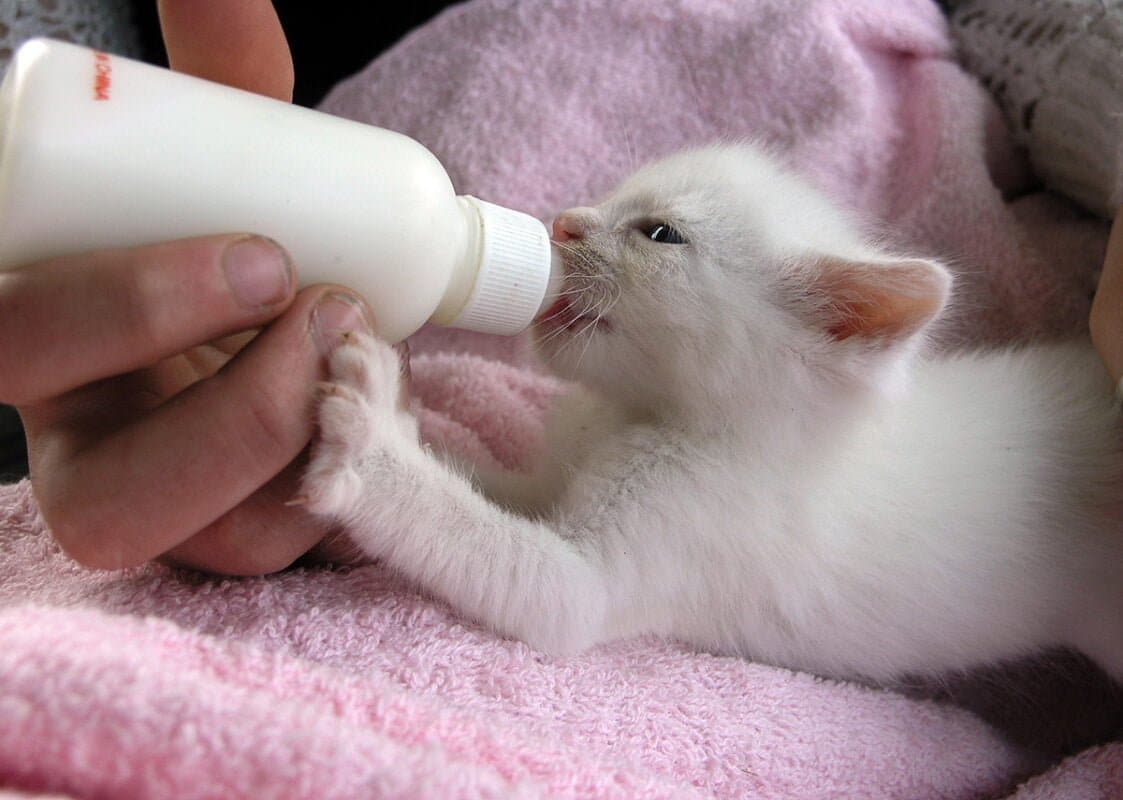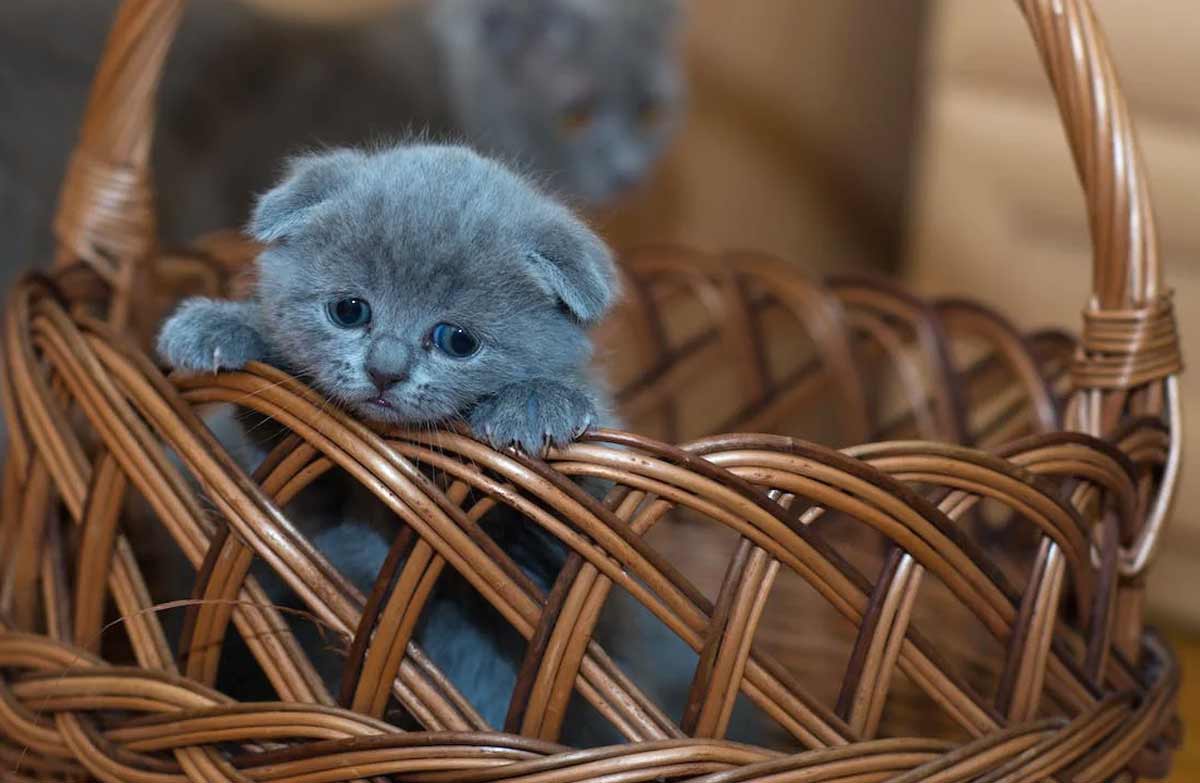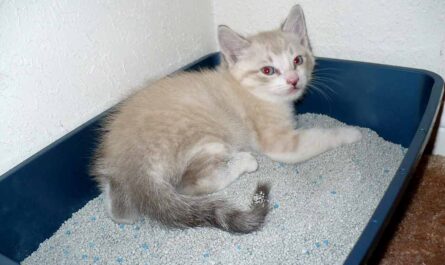Have you ever held a tiny, fragile kitten in your arms, their eyes barely open, their meows a mere whisper for an awesome bottle feeding? Perhaps you found them abandoned, orphaned by circumstance, or maybe their mother couldn’t care for them. Whatever the reason, their survival now rests in your hands. It might seem daunting at first, but nurturing a bottle-feeding kitten can be an incredibly rewarding experience, filled with heartwarming moments and the joy of witnessing their transformation into thriving, playful companions.
This comprehensive guide is here to equip you with the knowledge and confidence to navigate this special journey. We’ll delve into the essential steps of caring for your tiny friend, from understanding their needs to establishing a feeding routine and addressing potential challenges. Remember, with a little patience, love, and the right guidance, you can play a vital role in helping these vulnerable kittens blossom into healthy, happy felines.
Understanding Your Role: A Kitten’s Needs
Taking on the responsibility of bottle-feeding a kitten means becoming their temporary guardian, fulfilling a role similar to their mother. Let’s explore the various scenarios that might necessitate your intervention and the crucial aspects of caring for these delicate creatures:
Why Bottle Feeding?
Sometimes, life throws unexpected curveballs. A mother cat might be too young or inexperienced, unable to produce enough milk, or sadly, may no longer be around. In such situations, human intervention becomes essential to provide the vital nourishment kittens need to survive. Additionally, some litters might be too large for the mother to adequately care for all her offspring, requiring supplemental feeding.
Developmental Stages
Just like human babies, kittens experience rapid growth and development in their early weeks. Understanding these stages is crucial for tailoring their feeding regimen and overall care. From the helpless newborn stage with closed eyes and wobbly legs to the playful, curious kitten at eight weeks, their needs and abilities will continuously evolve.
Physical & Emotional Needs
While providing proper nutrition is paramount, a kitten’s well-being extends far beyond just food. They require warmth and comfort, mimicking the snuggles they receive from their mother. Maintaining a clean environment is vital for their delicate immune systems, and gentle cleaning with warm water and a soft cloth keeps them squeaky clean. Don’t forget about the importance of stimulating play! Engaging with feathery toys or chasing after a ball encourages their natural hunting instincts and fosters their physical and mental development.
Veterinary Care
Seeking professional guidance from your veterinarian is absolutely crucial throughout this process. Regular checkups ensure your kitten is healthy and growing at an appropriate pace. The vet can also provide valuable advice on feeding schedules, nutrition, and any potential health concerns that might arise. Remember, your veterinarian is your partner in ensuring your kitten thrives.
By understanding these key aspects of kitten care, you’ll be well-equipped to embark on this special journey of fostering a kitten’s well-being. Stay tuned for the next section, where we’ll delve into the practicalities of bottle feeding, with detailed guidance on choosing the right supplies, establishing a feeding routine, and addressing common challenges that might arise.
Preparation is Key: Gathering the Essentials
Taking care of a tiny, helpless kitten can be both daunting and heartwarming. Before embarking on your bottle-feeding journey, it’s crucial to gather the essential supplies to ensure your little furball receives the proper nourishment and thrives. Let’s dive into the key elements you’ll need to create a comfortable and successful feeding experience.
Choosing the Right Formula: Fueling Tiny Bodies for Big Growth
Just like human babies, kittens have specific dietary needs, and choosing the right formula is the cornerstone of their health. Here are some factors to consider when selecting a kitten formula:
- Age-appropriateness: Kittens have different nutritional requirements at different stages of development. Opt for a formula specifically formulated for the age of your kitten, whether they’re a newborn, a few weeks old, or nearing weaning age.
- Brand quality: Look for reputable brands known for their high-quality ingredients and adherence to industry standards. Research different brands and consult your veterinarian for recommendations tailored to your kitten’s specific needs.
- Dietary sensitivities: Some kittens might have sensitivities to specific ingredients like lactose (milk sugar) found in cow’s milk. Discuss any potential sensitivities with your veterinarian and choose a formula that caters to your kitten’s unique needs.
Remember, cow’s milk is not a suitable substitute for kitten formula. It lacks essential nutrients and can cause digestive problems in kittens.
Bottle Selection: Finding the Perfect Fit for Tiny Mouths
When it comes to choosing a bottle, consider your kitten’s age and size. Here are two common types of bottles:
- Standard nipple bottles: These resemble human baby bottles and are suitable for older kittens (around 3-4 weeks old) who have developed stronger sucking reflexes.
- Syringes or droppers: These are recommended for very young or weak kittens who might struggle with a standard nipple. They allow for controlled feeding and precise measurement of formula intake.
Opt for bottles made from soft, flexible materials that mimic the feel of a mother’s teat. Avoid bottles with rigid nipples that can irritate your kitten’s delicate mouth.
Sterilization Essentials: Keeping Tiny Tummies Safe
Hygiene is paramount when bottle-feeding kittens. Their developing immune systems are susceptible to infections, so proper sterilization of feeding equipment is crucial. Here’s how to ensure a clean and safe feeding environment:
- Boil: Submerge bottles, nipples, and any other feeding equipment in boiling water for 5-10 minutes to kill bacteria and viruses. Allow them to cool completely before use.
- Microwave sterilization: Some brands offer microwave-safe bottles and sterilization kits. Follow the manufacturer’s instructions carefully for safe and effective sterilization.
- Dishwasher: Opt for dishwasher-safe bottles and nipples, ensuring they are placed on the top rack for proper cleaning and sanitization.
Remember, always wash your hands thoroughly with soap and warm water before each feeding to prevent the spread of any germs.
Creating a Feeding Station: A Sanctuary for Nourishment
Just like human babies, kittens thrive in a calm and comfortable environment. Designate a quiet, warm, and well-lit space for feeding sessions. Avoid areas with high foot traffic or loud noises that might startle your kitten. You can use a soft towel or blanket to create a cozy nest for your kitten to feel secure and relaxed during feedings.
These are just the first steps in your journey of caring for a bottle-feeding kitten. Stay tuned for the next section where we’ll delve into the actual feeding process, providing step-by-step instructions and helpful tips to ensure a smooth and successful experience for you and your furry friend.
The Art of Bottle Feeding: Technique & Care
Taking care of a tiny, helpless kitten can feel like holding a piece of the future in your hands. Bottle-feeding these little furballs is a responsibility filled with love, care, and a touch of delicate skill. Here’s a guide to help you navigate this special journey:
Positioning: A Cozy Cradle for Tiny Tummies
Imagine yourself cradling a newborn baby. That’s the ideal position for your kitten during feedings. Hold them gently but securely, with their head slightly elevated and their body resting comfortably against your arm. This mimics their natural nursing position from their mother and prevents them from aspirating (inhaling) the formula.
Remember, kittens are tiny, so use a soft towel or blanket to provide extra support and prevent them from feeling overwhelmed.
Feeding Techniques: Slow and Steady Wins the Race
Think of a tiny kitten’s stomach as a miniature balloon – it’s delicate and can easily fill up too quickly. To avoid overfeeding, which can lead to discomfort and even health issues, always use a bottle specifically designed for kittens and follow these key steps:
- Warm the formula: Just like human babies, kittens prefer their meals warm. Gently heat the formula using a water bath, aiming for a temperature similar to your body temperature (around 99°F or 37°C). Never heat the formula in the microwave, as it can create hot spots that can burn your kitten’s mouth.
- Start slow: Don’t pour the formula directly into the kitten’s mouth. Instead, gently touch the nipple to their lips to stimulate their sucking reflex. Once they latch on, allow them to suckle slowly and steadily.
- Monitor closely: Pay attention to your kitten’s feeding cues. If they seem eager and are swallowing comfortably, you can allow them to continue feeding. However, if they start to struggle, cough, or seem uncomfortable, stop feeding and burp them.
Burping: A Tiny Release for Big Relief
Just like human babies, kittens can swallow air while feeding. This trapped air can cause discomfort and even gas. To help them feel their best, gently burp your kitten after each feeding by holding them upright against your shoulder and patting their back gently. You might hear or feel a small burp, similar to a hiccup.
Monitoring Intake: Keeping an Eye on Growth
Tracking your kitten’s milk intake is crucial to ensure they’re getting the proper amount of nourishment. Here’s what to watch for:
- Feeding Frequency: Newborns typically need to be fed every 2-3 hours, around the clock. As they grow older, the feeding frequency can gradually decrease.
- Feeding Amount: The amount of formula your kitten needs depends on their age and weight. Consult a veterinarian or refer to the feeding guidelines on the kitten formula for specific recommendations.
- Weight gain: Regularly weigh your kitten to monitor their growth. Consistent weight gain is a good indicator that they are getting enough nutrients.
Remember, every kitten is unique, and their feeding needs might differ slightly. If you have any concerns about your kitten’s feeding habits or overall health, it’s always best to consult a veterinarian for personalized guidance.
By following these tips and providing a gentle touch of love and care, you can successfully navigate the world of bottle-feeding kittens and help them blossom into happy, healthy companions.
Beyond Nourishment: Nurturing Your Tiny Feline Friend
While providing proper nutrition is crucial for your bottle-fed kitten’s physical development, nurturing their emotional and social well-being is equally important. Just like human babies, these miniature marvels need warmth, comfort, and stimulating experiences to thrive.
Warmth & Comfort: A Gentle Embrace
Imagine yourself as a tiny kitten, feeling lost and alone. One of the most comforting sensations for these vulnerable creatures is warmth. Mimicking their mother’s body heat is essential for regulating their temperature and promoting healthy development.
Here are ways to provide constant warmth for your little furball:
- Heating pads: Invest in a specifically designed heating pad for pets, ensuring it has adjustable temperature settings and is covered with a soft fabric to avoid burns. Place it in a comfortable and draft-free area within the kitten’s designated space.
- Snuggle haven: Create a cozy nest using a soft towel, fleece blanket, or a commercially available “snuggle sack.” You can even tuck in a ticking clock to mimic the comforting heartbeat of a mother cat.
Remember, constant supervision is crucial when using heating pads, and always monitor the temperature to avoid overheating.
Stimulating Play: Igniting a Spark of Curiosity
Even the tiniest kittens have an innate desire to explore and play. Engaging them in short, playful sessions throughout the day is not just fun, it’s crucial for their physical and mental development.
- Safe toys: Provide an array of age-appropriate toys that cater to their natural instincts, like soft crinkly balls, dangling feather toys, or textured chew toys. Rotate the toys regularly to keep them interested and engaged.
- Interactive play: Gently mimic a mother cat’s playful swats with a soft toy, encouraging the kitten to pounce and chase. This not only entertains them but also hones their hunting skills and coordination.
- Sensory exploration: Offer different textures and materials for them to investigate, like crumpled paper balls, cardboard boxes with peepholes, or catnip-filled toys. This stimulates their natural curiosity and helps them learn about the world around them.
By providing stimulating play sessions, you’ll not only keep your little one entertained but also help them develop essential motor skills, problem-solving abilities, and a healthy dose of confidence.
Toilet Training: A Gentle Introduction
While it may seem daunting, litter box training can be a surprisingly smooth process with patience and gentle guidance. However, it’s important to remember that kittens generally aren’t developmentally ready for litter box training until around 4-5 weeks old.
Here are some tips for a successful introduction:
- Choose the right litter box: Select a shallow box with low sides, making it easy for tiny paws to climb in and out. Opt for unscented clumping litter that is gentle on their delicate respiratory systems.
- Location, location, location: Place the litter box in a quiet, easily accessible location, away from their food and sleeping area.
- After feeding and playtime: Gently stimulate the kitten’s elimination reflex by rubbing their belly with a warm, damp washcloth after feedings and playtime. This mimics the grooming behavior of a mother cat and encourages them to use the litter box.
- Positive reinforcement: When your little one uses the litter box, shower them with praise and positive reinforcement, like gentle petting or a verbal “good job!”
Remember, accidents are inevitable during this learning process. Be patient, clean up any mishaps promptly, and avoid using harsh punishment, as this can only hinder progress.
Socialization: Building Bridges for Life
Early socialization, the process of introducing your kitten to different sights, sounds, and people in a positive and controlled manner, plays a vital role in shaping their future behavior and personality. A well-socialized kitten is more likely to be confident, friendly, and adaptable to various situations throughout their life.
Here are some ways to socialize your bottle-fed kitten:
- Gradual introductions: Start by introducing your kitten to calm and gentle individuals from a young age. Let them approach the kitten at their own pace and offer positive interactions like gentle petting or playtime.
- Safe exposure: Expose them to different household sounds like the vacuum cleaner or the doorbell in a calm and controlled manner. This helps them get accustomed to everyday noises and prevents them from developing fear or anxiety. How AI, ChatGPT maximizes earnings of many people in minutes
- Supervised interactions: If you have other pets in the household, ensure supervised interactions once the kitten is old and strong enough. Introduce them slowly and watch for any signs of aggression or discomfort.
Socialization is a continuous process that requires patience and gentle guidance. By exposing your kitten to positive experiences early on, you’ll be setting them up for a happy and well-adjusted life.

Conclusion: A Rewarding Journey of Nurturing Tiny Lives
The journey of bottle-feeding orphaned or abandoned kittens is an undertaking filled with both challenges and immense rewards. You’ve likely faced sleepless nights, the worry of getting things right, and the frustration of tiny paws exploring every nook and cranny but not quite reaching the bottle. But amidst these challenges, you’ve also witnessed the incredible resilience and playful spirit of these tiny beings. Fitness – Meditation – Diet – Weight Loss – Healthy Living – Yoga
Celebrating Success: The Joy of Raising Thriving Kittens
As your tiny charges grow stronger with each passing day, their meows getting louder and their playful energy blossoming, the sense of accomplishment will surely warm your heart. Watching them develop from helpless newborns to curious explorers, their eyes sparkling with life, is a testament to your dedication and nurturing care. You’ve not only provided them with essential sustenance, but also with a safe haven, a gentle touch, and the warmth of love, giving them the chance to thrive and blossom into healthy, happy felines.
Final Note: A Heartfelt Gratitude
Your decision to step up and care for these vulnerable creatures in their time of need speaks volumes about your compassion and kindness. Raising orphaned kittens can be a demanding yet incredibly rewarding experience, filled with moments of joy, wonder, and unconditional love. If you ever feel overwhelmed or have any questions along the way, remember, there’s no shame in seeking professional guidance from your veterinarian or an experienced animal welfare organization. They are there to support you and ensure these precious kittens receive the best possible care. RPM 3.0 – 60% CONVERSION & Money for Affiliate Marketing
Additional Sections (Optional)
Kitten Development Chart
| Age (Weeks) | Feeding Frequency | Developmental Milestones |
|---|---|---|
| 0-2 | Every 2-3 hours | Eyes closed, unable to regulate body temperature |
| 2-4 | Every 3-4 hours | Eyes begin to open, wobbly attempts at walking |
| 4-6 | Every 4-6 hours | More playful and interactive, begin grooming themselves |
| 6-8 | 4-5 feedings per day | Start exploring their surroundings, teeth begin to erupt |
| 8-12 | 3-4 feedings per day | Weaned onto solid food, develop social and hunting skills |
Kitten Formula Recipe (Homemade)
Disclaimer: While this recipe can be used as an alternative in emergencies, it’s crucial to consult with your veterinarian before administering any homemade formula to ensure it meets your kitten’s specific needs and nutritional requirements. Never substitute a vet-approved commercial formula without professional guidance. Cat accessories on Amazon
Ingredients:
- 1 cup evaporated milk (unopened)
- 1 egg yolk (fresh, room temperature)
- 1 tablespoon light corn syrup
- 1/4 teaspoon vegetable oil
Instructions:
- Combine all ingredients in a clean blender.
- Blend until smooth and well-mixed.
- Warm the formula to a lukewarm temperature (around 99°F) using a double boiler or water bath.
- Test the temperature on the inside of your wrist before feeding.
- Discard any unused formula within 24 hours.
Remember: This recipe is provided for informational purposes only and should not be used as a substitute for consulting a veterinarian. Always prioritize the health and well-being of your kitten by seeking professional advice from your vet or a qualified animal care provider.
Other Interesting Articles
- How to Make Your Cat Really Happy: 29 Tips You May Try
- How to Train Your Cat to Stop Urine Marking? 12 Tips
- How Do Cats Communicate Each Other? 11 Body Language
- 24 Ways To Know If You Have An Extremely Happy Cat
- What Smells Do Cats Hate: 34 Scents You Must Avoid
- Everything You Need To Know About Cat Territory Marking
- 12 Reasons Why You Should Adopt A Second Cat
- 12 Reasons Cats Pee Outside the Litter Box: How To Solve
- 14 Reasons Why Cats Overgroom: Surefire Ways To Stop It
- Why is My Cat So Clingy? 13 Common Signs: 9 Caring Tips
- Is Your Cat Bored? 12 Common Signs: What You Can Do
- Stress in Cats: Causes, Symptoms, Remedies, Treatment
- 17 Common Signs Your Cat is Lonely: 10 Tips To Help Recover
- 14 Reasons My Cat is Acting Strange & Scared: What to Do?
- How Do Cats Hunt Their Prey, Mice, Bird, Fish, Rat For Food?
- How To Introduce A New Kitten To An Older Cat: 16 Tips
- 15 Reasons Why Do Cats Lick and Groom Each Other
- Domesticated Cats And Big Cats: 24 Similarities, Differences
- 21 Interesting Facts You Should Know About Feral Cats
- How to Socialize a Feral Kitten in 10 Simple Steps



